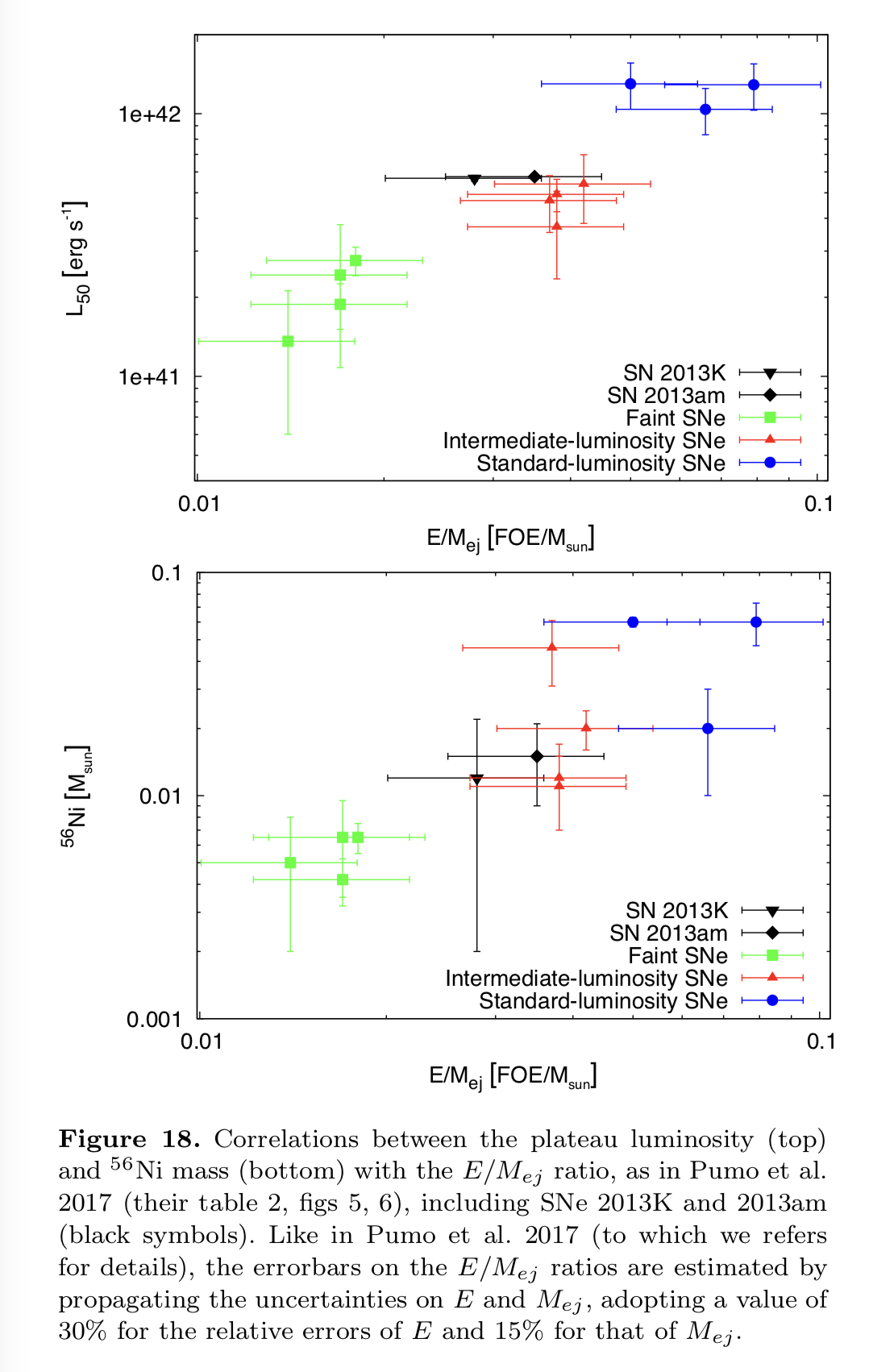Padova-Asiago Supernova Group
Highlights
SNe 2013K and 2013am: observed and physical properties of two slow, normal Type IIP events
Tomasella, L. et al. 2018, MNRAS 475, 1937 (link to pdf)
We present one year of optical and near-infrared photometry and spectroscopy of the Type IIP SNe 2013K and 2013am. Both objects are affected by significant extinction, due to their location in dusty regions of their respective host galaxies, ESO 009-10 and NGC 3623 (M65). From the photospheric to nebular phases, these objects display spectra congruent with those of underluminous Type IIP SNe (i.e. the archetypal SNe 1997D or 2005cs), showing low photospheric velocities (~2 X 10**3 km/s at 50d) together with features arising from Ba II which are particularly prominent in faint SNe IIP. The peak V-band magnitudes of SN 2013K (-15.6 mag) and SN 2013am (-16.2 mag) are fainter than standard-luminosity Type IIP SNe. The ejected Nickel masses are 0.012+-0.010 and 0.015+-0.006 Msol for SN 2013K and SN 2013am, respectively. The physical properties of the progenitors at the time of explosion are derived through hydrodynamical modelling. Fitting the bolometric curves, the expansion velocity and the temperature evolution, we infer total ejected masses of 12 and 11.5 Msol, pre-SN radii of ~460 and ~360 Rsol, and explosion energies of 0.34 foe and 0.40 foe for SN 2013K and SN 2013am. Late time spectra are used to estimate the progenitor masses from the strength of nebular emission lines, which turn out to be consistent with red supergiant progenitors of ~15 Msol. For both SNe, a low-energy explosion of a moderate-mass red supergiant star is therefore the favoured scenario. 105
Tomasella, L. et al. 2018, MNRAS 475, 1937 (link to pdf)
We present one year of optical and near-infrared photometry and spectroscopy of the Type IIP SNe 2013K and 2013am. Both objects are affected by significant extinction, due to their location in dusty regions of their respective host galaxies, ESO 009-10 and NGC 3623 (M65). From the photospheric to nebular phases, these objects display spectra congruent with those of underluminous Type IIP SNe (i.e. the archetypal SNe 1997D or 2005cs), showing low photospheric velocities (~2 X 10**3 km/s at 50d) together with features arising from Ba II which are particularly prominent in faint SNe IIP. The peak V-band magnitudes of SN 2013K (-15.6 mag) and SN 2013am (-16.2 mag) are fainter than standard-luminosity Type IIP SNe. The ejected Nickel masses are 0.012+-0.010 and 0.015+-0.006 Msol for SN 2013K and SN 2013am, respectively. The physical properties of the progenitors at the time of explosion are derived through hydrodynamical modelling. Fitting the bolometric curves, the expansion velocity and the temperature evolution, we infer total ejected masses of 12 and 11.5 Msol, pre-SN radii of ~460 and ~360 Rsol, and explosion energies of 0.34 foe and 0.40 foe for SN 2013K and SN 2013am. Late time spectra are used to estimate the progenitor masses from the strength of nebular emission lines, which turn out to be consistent with red supergiant progenitors of ~15 Msol. For both SNe, a low-energy explosion of a moderate-mass red supergiant star is therefore the favoured scenario. 105
